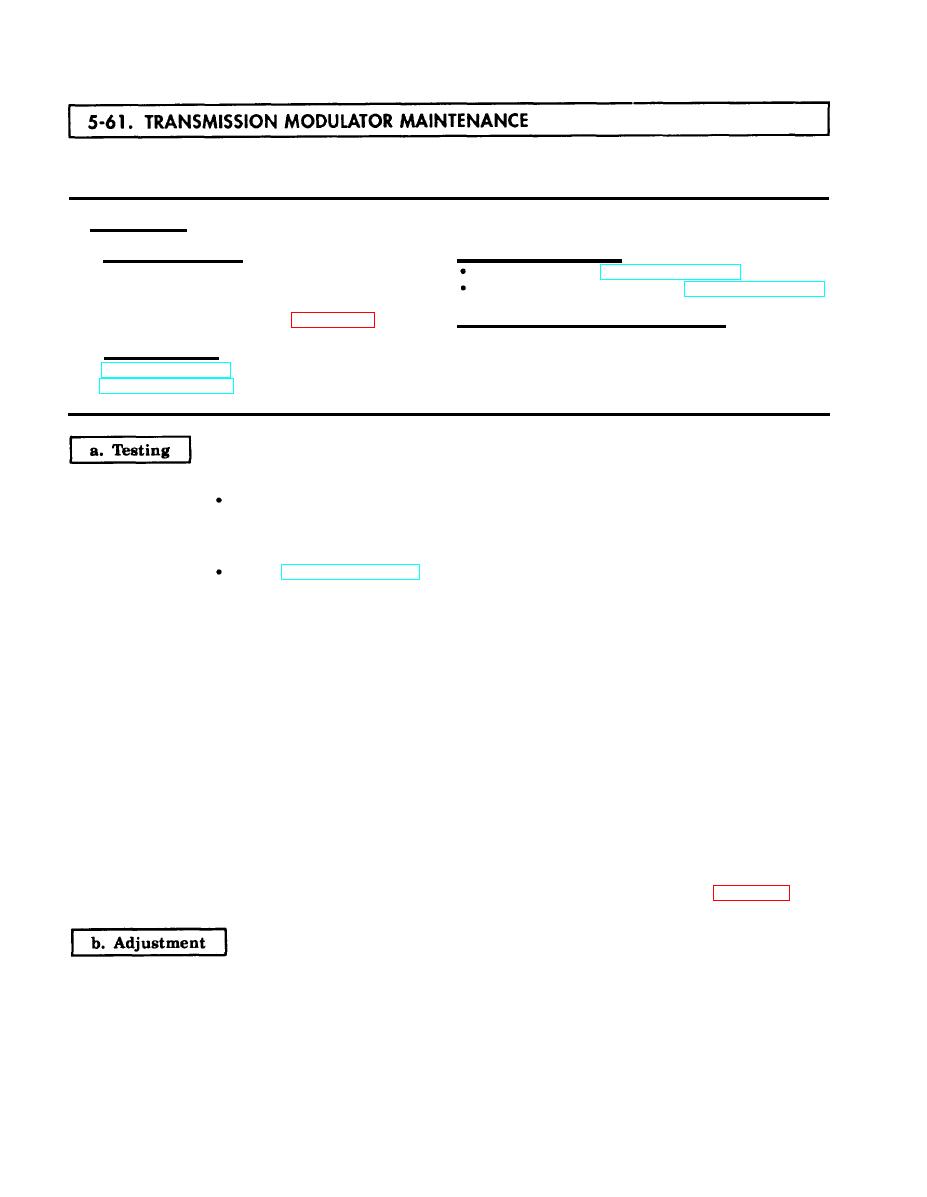
TM 9-2320-272-24-4
THIS TASK COVERS:
b. Adjustment
a. Testing
INITIAL SETUP:
APPLICABLE MODELS
EQUIPMENT CONDITION
Parking brake set (TM 9-2320-272-10).
All
Vehicle at curb weight (empty) (TM 9-2320-272-10).
TOOLS
SPECIAL ENVIRONMENTAL CONDITIONS
General mechanic's tool kit (Appendix E, Item 1)
Dry conditions, open roads, and easy grades.
REFERENCES (TM)
LO 9-2320-272-12
TM 9-2320-272-10
TM 9-2320-272-24P
NOTE
Vehicle engine must be at normal operating temperature of 175-
195F (79-90C) as indicated by temperature gauge. Transmission
oil temperature must be at normal operating temperature of 120-
220F (49-104C) as indicated by temperature gauge.
Refer to TM 9-2320-272-10 for steps 1 through 7.
1.
Allow vehicle engine and transmission to reach normal operating temperatures with transmission
shift lever in N (neutral) and parking brake set.
2.
After warmup, depress accelerator pedal until engine reaches 2,100 rpm. If engine does not reach
2,100 r-pm, see table 4-1, fuel system malfunction 15. Proceed with testing if engine reaches
2,100 rpm.
NOTE
Assistant will operate vehicle as directed by mechanic. Mechanic
will observe and record engine rpm indicated by tachometer
during shift changes.
3.
Place transmission shift lever in 1-2 (second) and road test vehicle.
4.
Accelerate at full throttle, 1,900-2,050 rpm, and note shift change. Record engine rpm at moment of
shift change.
5.
Stop vehicle and repeat steps 3 and 4 in 1-3 (third).
6.
Stop vehicle and repeat steps 3 and 4 in 1-4 (fourth).
7.
Stop vehicle and repeat steps 3 and 4 in 1-5 (drive).
8.
Compare recorded engine rpm at shift points with correct shift point ranges given in table 5-17. If
all shift points are too high or too low by approximately same amount, adjust modulator (4).
1.
Inspect modulator (4) and cable (3) for looseness and improper installation.
5-394


